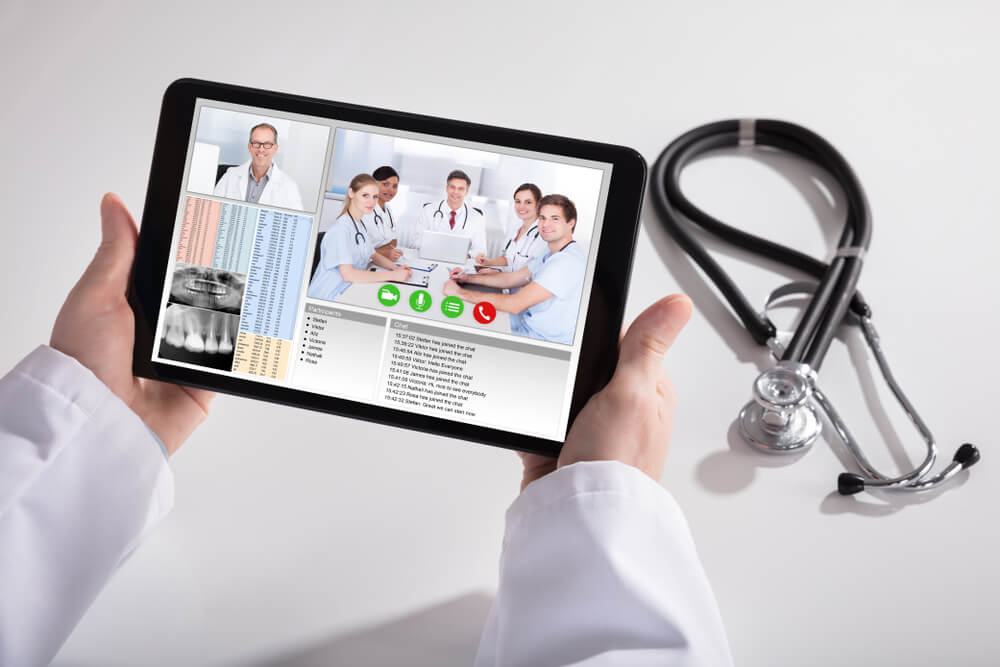
Why a Unified Digital Experience for Patients Matters
The purpose of a unified digital experience in healthcare is to integrate multiple digital contact points in order to streamline patient interactions. These range from scheduling appointments to accessing medical records and receiving personalized care.
The rapid advancement of technology has amplified its significance. Prioritizing a unified patient experience elevates care standards while simultaneously increasing patient satisfaction with seamless, accessible, personalized services.
This article discusses why cultivating a unified digital experience is indispensable in modern healthcare digital marketing. Here are the points we will cover:
- Enhances patient engagement and satisfaction
- Streamlines healthcare management
- Improves accessibility
- Increases accuracy and reduces errors
- Integrates patient feedback for improvement
- Supports personalized patient care
- Adapts to patient needs and technological changes
Learn more about the benefits of patient-focused experiences below. Let’s go!
Are you looking for help with marketing your healthcare business? Watch the video below to learn our approach to healthcare marketing and why 150+ healthcare companies have chosen Digital Authority Partners to help them generate more leads and patient appointments.
1. Enhances Patient Engagement and Satisfaction
A unified digital healthcare experience enhances patient engagement by consolidating services into one platform. This tool offers personalized information, appointment scheduling, and direct communication with healthcare providers.
Ease of accessibility encourages active patient involvement in health management through self monitoring, educational resources, and telehealth consultations. For example, mobile apps strengthen tracking health metrics and medication adherence.
An expert healthcare software developer helps providers create an app for these many and varied patient care services. A well-planned custom platform improves patient engagement, satisfaction, and revenue.
A seamless digital interaction significantly boosts patient satisfaction by simplifying processes, enhancing convenience, and reducing the frustration associated with traditional healthcare tasks. Patients feel more valued, cared for, and empowered.
2. Streamlines Healthcare Management

A unified digital platform improves healthcare management, benefiting both patients and providers with streamlined efficiency and convenience. Besides simplifying appointment scheduling, patients can book, reschedule, or cancel appointments in real time as needed.
Integrating patient portals offers secure access to medical records, test results, treatment plans, and accurate and updated data across healthcare settings. Telehealth services within these platforms greatly improve accessibility to patients in remote places.
Streamlining healthcare management also enhances convenience for patients. It reduces wait times and gives them greater control over their medical decisions. It also optimizes administrative tasks for providers, leading to efficient appointment management, decreased no-show rates, and better patient care delivery.
3. Improves Healthcare Accessibility
Prioritizing a patient-focused digital experience significantly improves healthcare accessibility with smart uses of online platforms. Specifically, websites and dedicated apps break geographic barriers and overcome mobility constraints.
Accessing a broad range of healthcare services becomes notably easier for patients with limited mobility or those residing in remote areas. Individuals who cannot travel to healthcare facilities now benefit from the telehealth services or online consultation features embedded in these tools.
Moreover, patients with chronic conditions or complex medical histories securely access their medical records, lab results, and treatment plans via these unified platforms. This access helps them actively engage in healthcare management, thus fostering better communication with doctors and more informed decision-making.
4. Increases Accuracy and Reduces Errors

A unified patient experience both improves accuracy in providing medical services and minimizes errors. It centralizes and automates data management processes because these systems integrate many aspects of healthcare. These include rapid access to electronic health records, medication lists, lab results, and treatment plans.
Consolidation minimizes the risk of errors associated with manual data entry, transcription, or lost paper records. Healthcare professionals can access accurate and complete patient information through standardized and automated medical records, thus preventing misinterpretation or discrepancies.
These systems also often include decision-support tools that provide alerts for potential medication conflicts, allergies, or duplicate tests. These aid clinicians in making informed diagnoses and prescribing accurate treatments.
Additionally, digital tools within a unified system promote the accuracy, security, and accessibility of patient data. They enable real-time updates and synchronization of patient information across a range of settings so authorized personnel can access the most current data.
Ease of access to up-to-date patient data helps healthcare professionals make well-informed decisions, deliver more precise treatments, and efficiently coordinate care across multiple medical specialties. This ability reduces the chances for prescribing conflicting drugs, over prescribing, or even simply scheduling conflicting appointment times.
5. Integrates Patient Feedback for Improvement
Integrating patient feedback into the digital healthcare experience supports patient-centric care and continuously enhances services. The input is a valuable source of insights on areas for improvement. It also identifies strengths and offers perspectives on the effectiveness of digital platforms.
By actively seeking out and incorporating patient input, healthcare providers and technology developers align their services more closely with patient needs, preferences, and expectations. This ultimately leads to more tailored and satisfactory medical experiences.
Several effective methods exist for collecting and implementing patient feedback to improve digital platforms and services. Integrating responses to surveys and questionnaires, along with spontaneous patient feedback via suggestion forms give patients convenient means to express opinions and describe thoughts about experiences. Analyzing their comments and reviews identifies patterns of difficulties, areas requiring attention, and successful marketing achievements.
6. Supports Personalized Patient Care

A unified digital experience supports personalized patient care through digital tools that form the basis for individualized healthcare plans.
These platforms integrate different types of health data to help providers gain deeper insights into each patient’s medical profile. Care providers then personalize care plans based on patient needs, preferences, and health histories.
Features within these unified tools enable clinicians to customize healthcare services in several ways. For instance, they incorporate decision support systems and predictive analytics for more informed decisions about treatment options and care pathways best suited to the patient’s unique circumstances.
In sum, patient-facing digital interfaces, such as mobile apps or patient portals, allow individuals to actively participate in their healthcare.
7. Adapts to Patient Needs and Technological Changes
Patients’ expectations for seamless, convenient, personalized healthcare experiences continually evolve. Healthcare providers must continuously assess and adapt their digital platforms to meet these changing needs.
Technologies, such as generative artificial intelligence, telemedicine, wearables, and data analytics, offer innovative solutions that significantly enhance the digital healthcare experience. On the other hand, stagnating technology leads to outdated, inefficient systems that limit optimal care.
Healthcare providers must foster a culture of innovation. Collaboration among clinicians, IT specialists, and patients identifies ways for technologies to improve care delivery. Open communication and cooperation between medical IT partners and vendors results in innovative tools and solutions tailored to the industry’s needs.
Regular assessments of existing digital platforms identify areas that need updates to better align with patient needs and technological advancements. Finally, feedback from patients and healthcare staff regarding their experiences with digital platforms gives valuable insights for improvement and innovation.
Summing Up
A unified digital experience enhances patient engagement, satisfaction, and accessibility. It streamlines healthcare management by integrating appointment scheduling, medical records access, and telehealth in practical ways that optimize patient-provider interactions.
These platforms foster better communication, reduce errors, and support personalized care plans, improving overall healthcare quality.
Healthcare providers should prioritize investing in comprehensive digital media to align with evolving patient needs, ensuring efficient, tailored, and patient-centric care delivery for better health outcomes and satisfaction.
What role does technology play in shaping the future of patient-centered care in your company or organization? Contact Digital Authority Partners for the latest healthcare digital marketing strategies to grow your company today.
Want To Meet Our Expert Team?
Book a meeting directly here




